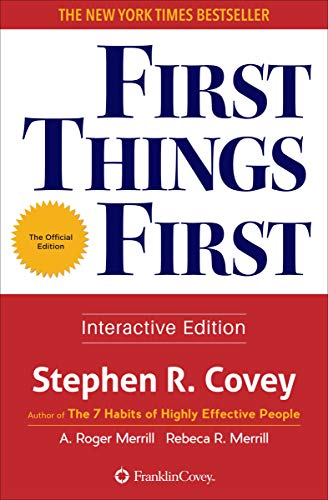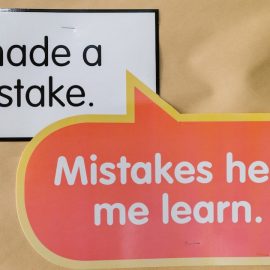

This article gives you a glimpse of what you can learn with Shortform. Shortform has the world’s best guides to 1000+ nonfiction books, plus other resources to help you accelerate your learning.
Want to learn faster and get smarter? Sign up for a free trial here .
Should you give your employees autonomy over their work? How does giving people autonomy affect their performance? How much autonomy at work is safe?
In most organizations, employees have little autonomy to take initiative. This is bad for job satisfaction, professional growth, and for the company.
Keep reading to learn why employees in autonomous workplaces are both happier and more productive, and some strategies to implement autonomy in your organization.
The Importance of Autonomy
Autonomy is the ability to control what you work on and how you work, including, among other things, your schedule, responsibilities, and office space. Autonomy at work is such an important determiner of happiness that Cal Newport (So Good They Can’t Ignore You), calls it the “dream-job elixir.” Most common dream jobs provide autonomy at work—for example, many people want to own a farm not only to get away from screens and escape their cubicles, but also because the country lifestyle offers so much autonomy.
People who have autonomy at work tend to be happier and more productive. In one study, Cornell researchers studied two groups of small businesses, 150 of which didn’t give their employees any control, and 150 of which did. The businesses that gave their employees control grew at 400% of the rate of the non-autonomous businesses.
In another study, researchers found that when middle school teachers who worked in difficult school districts were given autonomy, they were promoted more quickly and their students’ performance improved.
So Good They Can't Ignore You
by Cal Newport
24 min reading time
119.1k reads
audio version available
| In his book Hooked, Nir Eyal writes that threats to autonomy give rise to reactance, the adrenaline-fueled feeling when your boss micromanages you or your mom tells you to put on your coat. This increases the friction of completing a task. Eyal hypothesizes that part of the reason people sneak breaks to look at their phone or Facebook at work is to regain some sense of autonomy. |
The Four Dimensions of Autonomy
In his book Drive, bestselling author Daniel H. Pink stresses the importance of autonomy, arguing that people who are given more freedom may be even more accountable for their work, not less (maybe because when given more trust and freedom, they don’t want to let their employer down).
According to Pink, employees need to have autonomy over four major dimensions of their work: the task, the time, the technique, and the team.
Autonomy Over Tasks
In typical work environments, the entirety of what you work on is decided. Instead, people should enjoy some autonomy in choosing what they work on.
One common way to implement this is by giving 20% time to employees to work on any project they want. The only requirement is that the project should further the goals of the organization somehow.
In some cases, this has seemed to unleash employee creativity:
- In the mid-20th century, 3M gave technical staff 15% free time. Post-its arose from this free time.
- For much of its early history, Google gave 20% time to employees, leading to famous projects like Gmail, Orkut, and Google Translate.
- Georgetown University Hospital gives nurses autonomy to conduct personal research projects.
Companies that give 20% time believe it signals trust in their employees to do good things and stay efficient when the leash is taken off.
Another way to give autonomy over tasks is by holding a FedEx day, where workers are given freedom to work with a team on a project of their choice. The only restriction is that they must ship the project within a day (hence FedEx). These are also known as “hack days.”
Autonomy Over Time
Many work environments require facetime at the office during specific hours. Checking in late or leaving early are signs of negligence. Some workers are now expected to be available by text, email, or Slack around the clock. This leash crowds out personal time, reduces satisfaction, and increases turnover.
The antidote is a Results-Only Work Environment (ROWE), where the focus is on the work itself rather than when they do it. Workers still need to meet goals and deadlines, but as long as they achieve their goals, they can work whenever and wherever they want.
Some companies like Netflix have pushed the boundary even further, giving unlimited vacation days. Some work structures, like the legal billable hour, are so centered around time that ROWE seems hard to implement. But some legal firms are moving toward flat rate billing for projects, rather than a time-based fee.
Autonomy Over Technique
Even when workers don’t have full autonomy over what they do, they can still enjoy autonomy over how they do it. Work doesn’t need to be micromanaged—given goals to hit, people can figure out the best way to achieve them.
Examples:
- Zappos gives support staff freedom on how to serve the customer, doesn’t require scripts, and doesn’t monitor calls. This has famously led to some support calls lasting hours, with a very satisfied customer on the other end.
- JetBlue hires remote support staff and allows them to answer customer calls from home. This allows drawing from a deeper pool of talent, like parents, retirees, and people with disabilities.
Autonomy Over Team
In most companies, you don’t get a choice of whom you work with. But this can lead to especially frustrating scenarios when you can’t stand certain teammates.
Some companies are experimenting with allowing people to choose their team:
- At Whole Foods, candidates work 30-day trials with a team, and the current employees decide whether to hire the person.
- At Facebook, new engineers spend 6 weeks in a coding boot camp. Then they interview with different teams and decide which to join.
- For 20% time and FedEx days, people can choose their own temporary groups to work with.
Across tasks, time, technique, and team, different people may have different preferences for how much of each type of autonomy they want. Some people may even want no autonomy for one or more of these. Pink recommends finding a way to match the best autonomy to each employee if possible.
What if Your Employees Aren’t Interested in More Autonomy?
Meet employees where they are. If they don’t feel comfortable assuming more autonomy or taking on more responsibility, don’t force them. But be clear about how much you value their talents and about your hope that they’ll eventually feel more comfortable with responsibility. Establish expectations and specify how you’ll continue to give them opportunities to take initiative.
You can also ease employees into assuming autonomy by declining to solve problems for them, instead asking, “What do you recommend?”
What if You Can’t Trust Them?
1. Examine the way you perceive the people you don’t trust. Ask yourself, “Do I believe this person can change?” If you’re approaching your colleagues or employees from a position of distrust, that’s coming through in your interactions. Assume that the people you work with aren’t trying to be incompetent or manipulative.
2. Support the people you don’t trust. Find ways to foster the development of colleagues or employees. Decide together which expectations are realistic and which resources and professional development opportunities could help improve performance.
Final Words
Humans are naturally wired to be self-driven. Giving employees an appropriate amount of autonomy at work has been associated with good things including higher productivity, less burnout, faster company growth, and better psychological health.
If you enjoyed our article about the importance of autonomy at work, check out the following suggestions for further reading:
Want to motivate your employees and teammates to do a better job? Does your team seem unhappy, unmotivated, and distrustful of your organization?
In Carrots and Sticks Don’t Work, Paul Marciano argues that engagement stems from respect. Employees don’t want to be treated like cogs in a chain. Instead, they want to feel empowered, have autonomy, receive supportive feedback, and be treated considerately. Learn what components of work people really want, and simple actions to take today to engage your team.
In Nine Lies About Work, Marcus Buckingham and Ashley Goodall argue that many of our workplace norms and practices are flawed. As a result, a majority of workers aren’t engaged at work and productivity growth is lagging. Thus, these typical practices prevent people and organizations from flourishing. To build thriving organizations, they assert that today’s leader should be a freethinking leader, one who questions established systems and beliefs and who values individuality over conformity.

Want to fast-track your learning? With Shortform, you’ll gain insights you won't find anywhere else .
Here's what you’ll get when you sign up for Shortform :
- Complicated ideas explained in simple and concise ways
- Smart analysis that connects what you’re reading to other key concepts
- Writing with zero fluff because we know how important your time is









